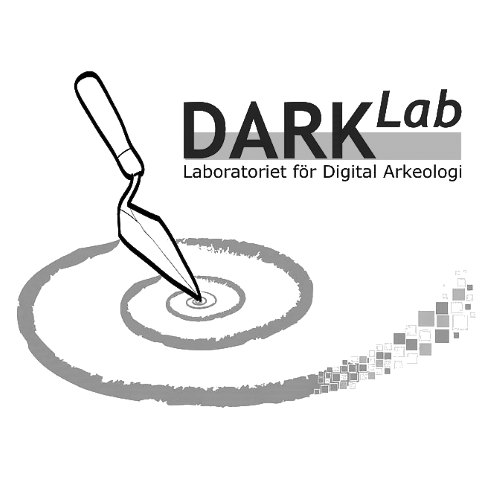Identifier
Title
Description
The find material consisting of ceramics from the campaign of 2019 was very limited, only comprising 5 finds. All of these were handpicked from the excavation of context 1001 (topsoil), context 1005 (floor surface), context 1013 (burning event), context 1020 (subsurface), and context 1033 (root disturbance).
To occurrence of only one or two ceramic sherds within each of these contexts supports an interpretation that ceramic vessels were not frequently occurring within the activities undertaken within Trench A on the Vång hill. The contexts excavated do not represent debris layers from ordinary settlement activity as has been recorded for certain subareas of the excavation area east of the Tving road (RAÄ Hjortsberga 121).
This contextual interpretation as well as the morphological characteristics of the sherds retrieved matches observations during earlier excavation campaigns within the Vång site complex (Henriksson 2021 appendix 4).
In comparison to ceramics, daub was more frequently retrieved from the contexts excavated in 2019. 19 fragments (Find A 63, Find A100, Find A101 ) were retrieved from the topsoil and the interface layer context 1002. 10 fragments (Find A 78, Find A 85, Find 112 ) were retrieved from the floor surface context 1005 and 7 fragments from one of the major root disturbances context 1033. Daub fragments were also retrieved from the posthole (1031), with 14 fragments attributed to the upper fill (1006) and 22 fragments attributed to the second fill (1030). One singular daub fragment (Find A 120) was also retrieved from burning event context 1013.
Despite making up a large portion of the total finds material retrieved, the daub fragments are interpreted as scattered material and not as representing deliberate or accidental destruction of constructional features or debris layers from such activity. This interpretation is substantiated by the daub fragments recorded in situ (Finds A63, A66, A67, A68, A69, A70, A78, A85). From this documentation, it can be deduced that the daub fragments don't form concentrated clusters but rather appear as scattered material present within the fill material.
A few fragmented finds of iron were retrieved from contexts in Trench A. These comprise flatrods (Find A90, Find A119, Find A131) and iron fragments (Find BLM29459 121 not in the database). 3 of the 4 flatrods retrieved were connected to the floor surface context 1005 and underlying layer context 1025, and 1 flatrod was attributed to burning event context 1013. The iron fragments (Find BLM29459_121 not in database) were attributed to small leveling layer context 1012.
The iron flatrods and fragments should most likely be given an interpretation as broken and discarded objects.
Burnt bone was relatively frequently retrieved from the contexts in Trench A. 12 fragments were attributed to interface layer context 1002 (Find A105). 13 fragments were retrieved from the stone packings in the north part of the trench, with 4 fragments attributed to the upper context 1016 (Find A124) and 9 fragments attributed to the lower subsurface context 1020 (Find A127). 23 fragments were retrieved from floor surfaces context 1005 and context 1022 (Find A92, Find A107, Find A129). 22 fragments were retrieved from the posthole context 1031, with 2 fragments attributed to the upper fill context 1006 (Find A117 ) and 20 fragments attributed to the second fill context 1030 (Find A133). 8 fragments were retrieved from the root disturbances contexts 1027, 1029, 1033 (Find A130, Find A132, Find A141).
Pending osteological analysis, the interpretation of the burnt bone material remains uncertain. A few suggestions can, however, be made on the grounds of contextual interpretation. The previously suggested interpretation of the stone structures investigated in the north part of the trench as grave structures could be neither proven nor disproven in light of the burnt bone material retrieved. This material, whether animal or human in origin, could very well represent scattered debris from bone deposits or ritual activities in connection with the stone structures. The small frequency of fragments does, however, make such an interpretation merely tentative. More fragments were retrieved from the underlying subsurface layer (context 1020) than from the stone packings (context 1016), which also makes the previous interpretations uncertain. The burnt bone material retrieved from the floor surfaces (contexts 1005, 1022) and the posthole backfills (contexts 1006, 1030) most likely represent scattered debris material. The frequency of fragments does not appear to be clustered within any specific context or part of the context. Instead, the fragment frequency of retrieved burnt bone material seems relative to the amount of excavated soil from the investigated contexts. This would imply that the scattering of bone debris within the contexts of Trench A was relatively even.
The find material in Cu-alloy retrieved from contexts within Trench A was relatively numerous, consisting of sparse metalworking debris in copper-alloy from contexts 1013 (Find A99), 1019 (Find A60), 1025 (Find A59)
Metalworking debris from metaldetection of the topsoil include Finds H1, H4, H5, H6, H7, H8, H9, H11, H12, H13, H14, H15, H17, H18, H20, H21, H22, H23, H24, H27, H28, H29, H30, H31, H34, H35, H36, H37, H38, H39, H40, H41, H42, H43, H45, H47, H48, H50, H52, H53, H54, H57, H81 ).
Set 3DHop scene
Record creator
Date Created
Rights Holder
License
Linked resources
| VV2019 report 3 Trench A |


















| Plane | Position | Flip |
| Show planes | Show edges |
0.0
[ 0 , 0 , 0 ]





